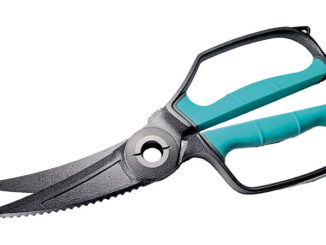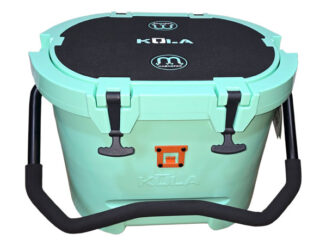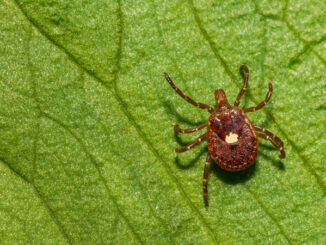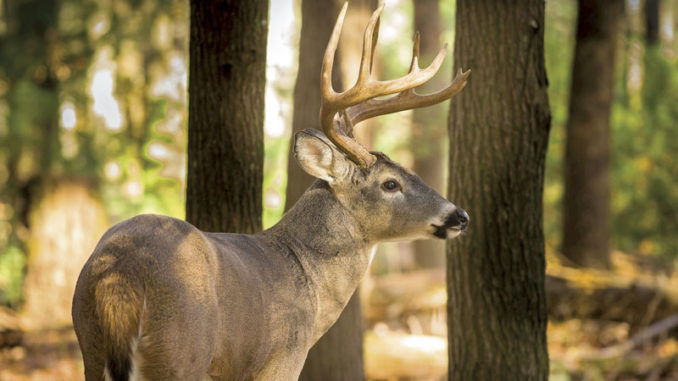
A failure in deer herd management costs time and money, and it can take the fun out of hunting.
Deer hunting is big business.
Hunters spend millions and millions of bucks in the pursuit of big bucks.
A short list: buying or leasing land, camp fees, farm equipment, ATVs and trailers, seed, fertilizer, wildlife consultants, wildlife programs, travel, guide fees and hunt fees.
That doesn’t include any of the hunting gear you use, but whether you spend a lot or a little, there is this bottom line:
If you are not achieving the goals and objectives of your deer program, you are wasting your time and money.
Recreation is all about re-creating yourself, and if deer hunting is not doing this, you need to find something that can.
Did you absorb what you just read? Deer hunting is recreation.
At the time when this country was being settled, hunting was a necessity in order to survive. As the country evolved into a nation, deer hunting changed. First, it became a source of income for market hunters, but market hunting took a toll on game populations.
Eventually, the agriculture industry developed enough to lessen the dependency on wild game, and our nation started being fed by American farmers. But the spread of agriculture brought a new problem: habitat loss dramatically reduced many game species populations, especially white-tailed deer.
Before World War II, most game populations were low. When the troops came home, soldiers were ready to get into the woods, fields and waters, but unfortunately, there wasn’t much to hunt.
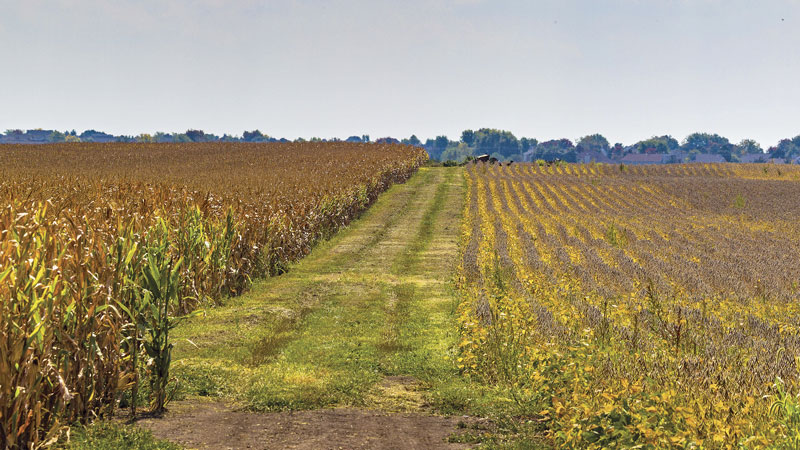
Sportsmen, like their successors now, were willing to spend money on wildlife restoration programs.
The programs worked, and by the 1960s, most states were open for deer hunting, including Louisiana. Hunting became a sport, and recreational deer hunting began to develop as the major hunting activity.
We are fortunate to live in a state where hunting is recognized as a recreational activity and where hunters have a long season and ample opportunity to enjoy it.
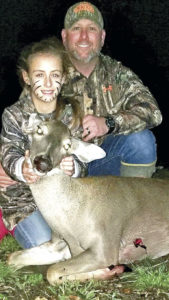
Some states have very short deer seasons, and the management mindset is more of “Get the hunters in the woods, get a desired deer kill and get the hunters out of the woods.” The same is true with the U.S. Fish and Wildlife Service, when it comes to deer hunting with guns on our national refuges. The USFWS doesn’t recognize recreational deer hunting; deer hunting is done to manage the herd.
Fortunately in Louisiana, state-owned Wildlife Management Areas offer sufficient opportunity to hunt deer in the fall and winter with both gun and bow, satisfying the demand of the public-land hunter.
How does one determine if a deer-management program is successful?
Naturally, the total deer kill is one measure of success. Louisiana’s total harvest peaked at around 250,000 and has since been on a decline, which has caused the Louisiana Department of Wildlife and Fisheries to look at the state’s deer-management program. Changes have been made, and more changes may be in the works.
You may have read that whitetail numbers are on a decline in some areas around the country. This has managers upset, because deer hunting is a money maker for most agencies.
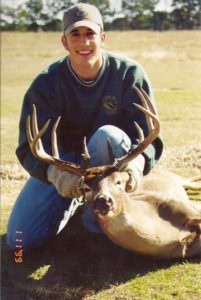
Another way to measure success is to compare the deer kill to the hunter-effort required to achieve it, which is the method used on public land. On the state’s Wildlife Management Areas, one deer killed for every six hunter-efforts is a great kill, while one deer killed for every 30 hunter-efforts is poor.
The annual average has been around one deer killed for every 10 hunter-efforts, which is good. Basically, it means the WMAs have good deer populations.
Another measure would be the total number of hunters chasing deer. Hunter numbers are at their highest when deer numbers are high.
While state agencies are concerned with hunter success and total deer kills, many hunt clubs and private landowners are probably judging the success of their deer programs by the physical condition of the deer being harvested.
State biologists are concerned with similar data, but they are limited to information collected from WMA hunters. The post-hunt report cards required from hunters do not include the age of any deer harvested, an indication that deer management is just a numbers game on the public lands.
While it is true that some clubs and landowners are also just concerned with taking deer, the trend is to produce and harvest big bucks. For many camps and hunters, trophy bucks are the measure of success.
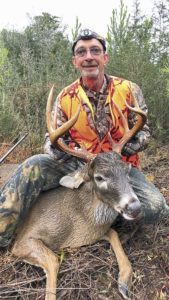
Traditional deer programs once geared toward a heavy harvest of bucks with less harvest of does have been replaced with quality deer management programs. There is more emphasis on doe harvest and less on the younger age-classes of bucks, with the target of producing mature bucks.
Thus, the number of quality bucks harvested becomes the measure of success for the program. A quality program should be harvesting bucks that score from 110 to 130 inches or more. Bucks that score 125 or better are recognized as trophies; a valid way to measure success. Quality bucks are not produced on land with poor habitat or in areas with high deer numbers.
A true trophy program would require passing on bucks that are 1 to 4 years old, with the hope that most will survive to maturity and full potential.
Using Boone & Crockett Club scoring is yet another way to measure success, but keep in mind that only a handful of B&C bucks are killed in Louisiana every year. Producing trophy bucks requires an intense management program that generally carries a high price tag. The trophy program would be producing bucks that score from 125 (bow kills) to 160-plus inches.
In order to determine whether a deer program is working, a club or landowner must first establish specific goals and objectives. Then, the club has to establish a management plan designed to achieve those goals and objectives. The plan should be based on the habitat, and it has to be realistic.
Habitat work is the key to success
Clubs that lease land from timber companies may have a tough time accomplishing goals since they have no control of the timber-management program. Forestland with a good oak component has the ability to enhance deer growth and development moreso than land dominated with pine timber.
The harvest program must be in line with the habitat and must be controlled and regulated. Both bucks and does should be harvested to achieve a balanced harvest. A club or landowner should probably seek the assistance of a deer biologist in an effort to determine how many deer should be harvested. The LDWF’s Deer Management Assistance Program works with clubs and landowners.
Harvesting the proper number of deer is one of the biggest obstacles to a deer program. Hunters like to see deer when they are hunting, even if they don’t shoot one. Deer observation is part of a quality hunt experience.
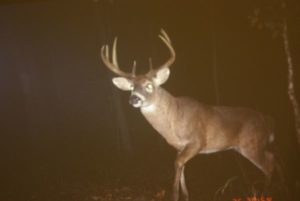
A deer herd in balance with the habitat may not have the deer numbers that allows hunters to regularly see deer. Unfortunately, lots of deer on the landscape is a major problem for quality or trophy programs.
In that respect, if deer numbers in general are on a decline, it might not be a bad thing. Low deer numbers generally equate to excellent body growth and antler development.
Data collection
Data collection should be a part of any management program. Without it, obviously, the only measure of success is the deer kill. Proper information collected includes jawbones for aging, body weights, reproductive data from females and antler measurements from bucks.
When the season ends, the data is examined and will aid in tracking deer growth and development. It generally takes several years of data to establish trends and to determine whether the program is working.
If after a few years the data shows that deer weights are low, and growth and development is slow, the management goals and objectives are not being achieved, and changes may be needed to accomplish objectives.
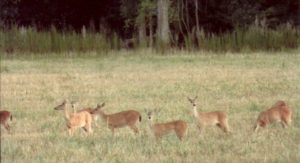
More habitat work could be required, harvest strategies may need to be changed, or a combination of each.
As stated earlier, shooting enough deer is probably the biggest obstacle for most clubs or landowners. Members will shoot up to a point, particularly does, and then that’s it. Without reaching the harvest quotas, the management program’s goals and objectives are never achieved.
Having been involved with deer-management programs since the 1970s, I have seen good ones and bad ones. Programs have gone from shooting every buck and very few does to shooting lots of does and few bucks. With the aging of Baby Boomers, I think the days of shooting lots of deer are over. It seems now that every hunter wants to shoot a good buck, and maybe a doe for sausage.
Deer habitat on the commercial forestland has become heavily pine dominated, much different from what it was in the 1960s and 1970s, and habitat is the key to success for a deer-management program. Habitat constantly changes, and the deer herd is going to respond either positively or negatively.
Hunter harvest creates changes in the deer herd, and a lack of harvest will impact the habitat.
I have selected a few clubs with different management programs and objectives to give you an idea about judging program success. These clubs and individuals have graciously allowed me to use them. Your program may be similar to one of these, and perhaps you can relate to what is going on with their management work.
Typical Area 2 hunting club
I grew up in Northwest Louisiana’s piney woods, and while I live in Deer Area 4, I still make annual hunts with my friends in Area 2. One of my high school buddies, Ken Mason, lives in Benton and hunts on a 10,000-acre club in Bossier Parish. Dick Smith is the club manger and is referred to as “Chief.”
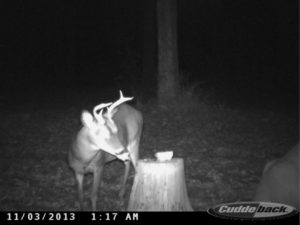
I worked with this club in the 1990s when it was involved with DMAP, and the club allowed me to collect reproductive data in season. We documented that deer breeding began in late October, was very hot and heavy in November, and by mid-December, the rut was over. In late December, bucks were losing antlers, and deer hunting was a slow as molasses.
The land is owned by a private timber company, and the habitat, which originally was a mixed oak/pine flat woods, has pretty much been converted to a dominant pine forest. The hardwoods were cut and the pines were planted on elevated rows. Deer growth and development is low, with an average adult doe weighing around 100 pounds. Members do some food-plot plantings.
This large club is really divided into two clubs, with some members belonging to both groups. The north club has started doing year-round feeding, and Smith believes this has helped enhance deer growth and antler development. Most of the hunting is done from permanent stands around food plots and feeders. Most of the hunting is with primitive or modern firearms, with little bowhunting.
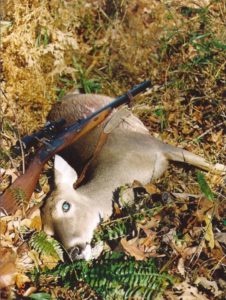
The goals are to harvest adult bucks, 2 years and older, along with enough does to achieve a balanced harvest. Basically, the club strives to shoot as many bucks as does, but it generally shoots more bucks than does. This is not really bad, due to the habitat situation. With a low plane of nutrition, doe weights are low, and if the club really hammered the does, the population would drop to a level undesirable for the hunters.
Most adult does produce a single fawn, but on this club, some are producing twins. Members can shoot one 6-point buck, which is usually a 2½-year-old, and after that, it’s 8-pointers or better. The buck harvest usually consists of 2- and 3-year-old bucks. Some members only target 8-pointers or better.
The club had participated in DMAP, but with every day a doe day, the club is able to harvest sufficient does without the need for DMAP. As mentioned, the club has no control on the forest management, so this is a drawback. There is a high coyote population and hogs on the landscape, just like the rest of the state.
Despite these issues, the club killed 50 adult bucks and 25 does last season. Some members feel that there are too many doe days and the deer season is too long. As mentioned, the rut occurs primarily in November, and by the end of December, deer activity goes to zero.
Members believe that reducing the January season would give time for other hunting activities. The does have been bred and are pregnant, and most hunters do not like the idea of shooting these pregnant does in January, nor do they want to shoot a buck that has already shed its antlers.
From my annual visits, I see good camaraderie among the members; they enjoy the season, and most members also have a freezer full of venison.
My opinion: This club is having success.
Top quality management
Chip Vosburg is heavily involved with quality deer management on the 1,200-acre tract of land he owns in Pointe Coupee Parish that he named Buck Crossing. Vosburg is an avid bowhunter and has often made out-of-state trips targeting trophy whitetails.
The management program he has applied on Buck Crossing is producing Pope & Young bucks, and, from what I have seen, the land has a good chance at producing a Boone & Crockett candidate.
Ask Vosburg if he thinks his program is working, and you will get a definite yes.
Habitat is a key to his success. The forest is bottomland hardwood with an excellent oak component. He intensely plants the openings in the summer and fall, with an additional bonus of being surrounded by farmland planted annually in corn, soybeans and winter wheat.
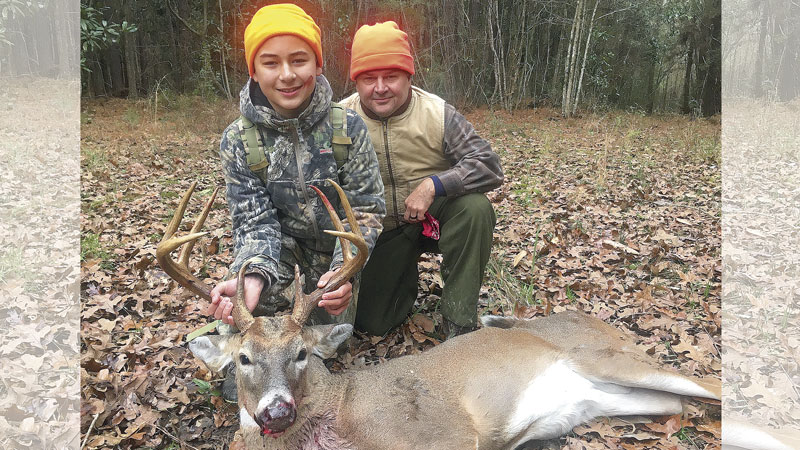
The harvest is directed at achieving the proper number of does, and while a few bucks are harvested from all age classes, the emphasis is on harvesting adult bucks 4½ years or older.
There is a good population of black bears on the property, along with coyotes and hogs. While these predators do create issues, probably the biggest problem is the lack of doe harvest on the surrounding lands.
While the doe harvest on Buck Crossing is being achieved, the lack of doe harvest on surrounding lands somewhat nullifies what Vosburg is accomplishing. Annual browse surveys indicate high deer numbers, and deer sightings remain high
My opinion: The program is working and will continue to produce both quality and trophy bucks.
A deer herd in decline
I hunt on a small tract of land in the Clinton area of East Feliciana Parish, and while some areas are seeing a decline in deer numbers, we are seeing a dramatic decline in deer quality. In 1995, my son, Ruffin, killed his first muzzleloader buck, a nice, 1½-year-old 6-pointer that weighed around 120 pounds. It was a quality rack for this age class.
By comparison, this past season, there were four 1½-year-old bucks harvested with spikes less than one inch, all weighing less than 90 pounds. The smallest one, which was a solid 1½-year-old, weighed 70 pounds — the typical weight of our 6-month-old bucks. My son did harvest a quality, 123-inch 8-point that weighed 160 pounds and was aged at 4½, but there was another 4½-year-old 5-pointer killed that weighed 140 pounds, and a 2½-year-old 4-pointer that weighed 105 pounds.
There were several other low-end bucks seen but not harvested.
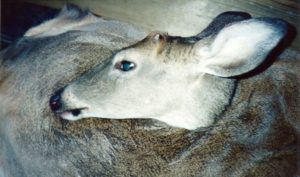
The habitat on the surrounding lands has evolved from a mixed pine/upland hardwood habitat to a pine-dominated forest. Herbicides are used to keep the hardwood growth down in the pine plantations. This dramatically reduces the availability of important deer browse plants.
The overall harvest is low, consequently, deer numbers are high, too high for what this habitat can support and allow for good body growth and development. The deer harvest on one large tract that adjoins our small tract is geared toward harvesting only the larger adult bucks — about 5% of the buck population. While there are some good bucks, similar to Ruffin’s, that are killed, the majority are not what would be considered quality deer.
I harvested a buck on this property that was a small 8-pointer with several points less than an inch. It was 3½ years old and weighed 125 pounds. Many hunters would look at that buck and think it is a young deer that will get better, while, in reality, it never will. Doe weights are low, and reproduction is poor.
There is no agriculture on the landscape, only cattle pastures, so the food plots are generally eaten up and don’t do much for deer growth. Since the timber program is designed to grow pines, not much can be done to improve habitat conditions other than getting rid of the pastures and going to row-crop agriculture.
Shooting more deer would be the best cure, but it appears that landowners are not interested in shooting many deer.
Coyotes and feral hogs also share habitat and are being blamed for deer-herd issues, but the fact is simply that there are too many deer on too little habitat. The best buck harvest program for this situation is to simply shoot a set number of bucks from all age classes; combine this with a good doe harvest, and it might be possible to see some positive changes in this herd over time.
My opinion: With current practices, this deer herd will continue to decline and might even crash.
In summary
Deer management is not an exact science, but there are two basic requirements that will help insure a successful program:
- Maintain good habitat for body growth and development.
- Keep the herd in balance with the habitat.
Achieving your goals will help you enjoy your time in the deer woods, allowing you to re-create yourself.
